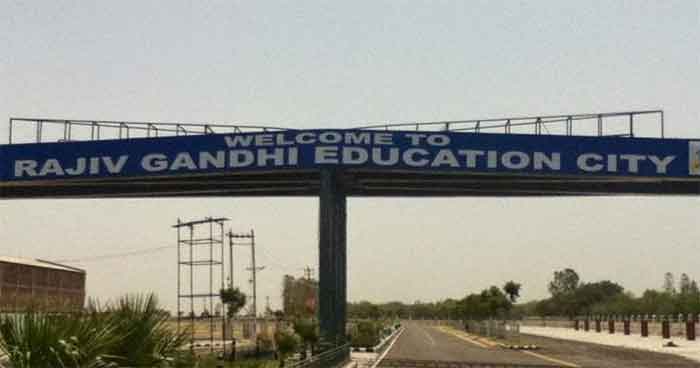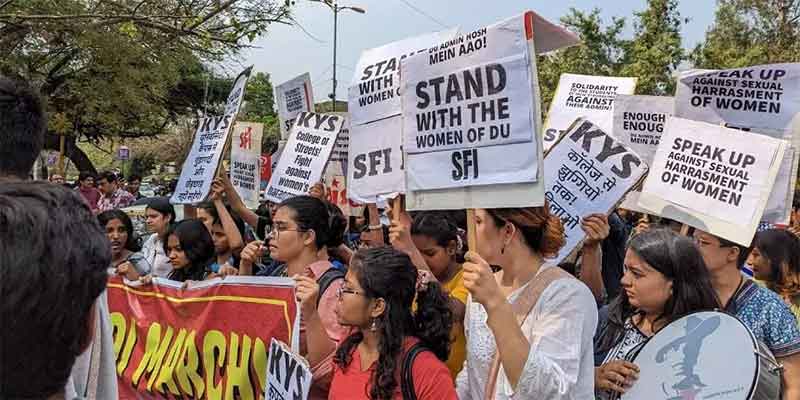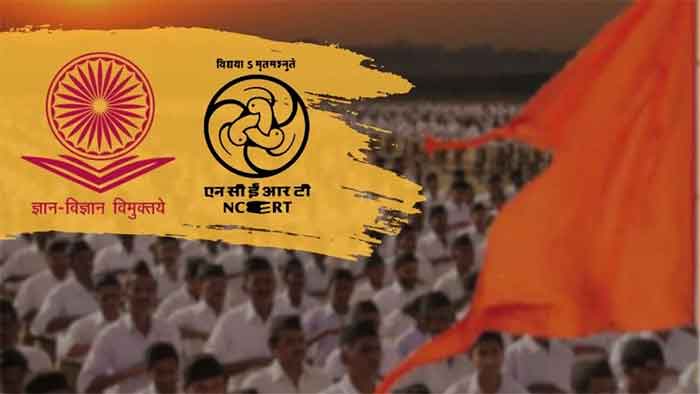
1
Ravela Somaiya, a senior socialist friend living in Hyderabad, had sent a video to me about two months back. I opened the video and found Ramchandra Guha’s speech in it, which was delivered at Ashoka University, Sonipat, Haryana. I closed the video without listening to that speech. This university came into limelight last year for abruptly terminating the services of Professor Pratap Bhanu Mehta. He had been the Vice Chancellor of this university for two years between 2017 and 2019. He resigned from that post citing academic reasons. However, he continued teaching at the university as a professor of political science. In March 2021, he even resigned from the university as a teacher. The trustees of the university had indicated to him to quit the job. It was told that the trustees, who wanted more facilities for the university, were under pressure from the government to remove Prof. Mehta.
There was a lot of discussion in the media about the episode of Prof. Mehta’s removal. The English daily ‘Indian Express’ had expressed opposition to Mehta’s removal by writing an editorial. The newspaper was surprised that now freedom of thought/speech is under attack even in private universities! Mehta has been Contributing Editor of ‘Indian Express’ for a long time. Therefore, the opposition of the newspaper to his removal was understandable. But it would be naive to raise the question of ‘freedom of thought’ by the newspaper in this matter. Needless to say that nowadays freedom of thought often means freedom of neoliberal ideas. ‘Indian Express’ is a strong advocate of neoliberal policies; And Mehta has also been a strong supporter of neo-liberalism since its beginning. Then, what freedom of Mehta’s ideas was violated, it could not be clear from the editorial. Perhaps, the government may have been troubled by the tone of anti-communalism in Mehta’s articles. But neither ‘Indian Express’ nor Prof. Mehta would have agreed to accept the fact that communal fascism, which both oppose vehemently, is inseparable from neo-liberalism.
However, this comment has not been written regarding the relation between neo-liberalism and communal fascism. An attempt has been made in the comment to clarify that intellectuals along with state i.e. political power, builders/developers and judiciary have a united role in spreading the net of private universities/educational institutions in the country. It is not a matter of nexus between political power and private capital alone, as is commonly believed. The political class provides land, loans and administrative facilities to players of private capital at throwaway prices. But the judiciary and the intelligentsia provide ‘legitimacy’ to this whole process. Despite large-scale displacements and suicides of farmers-tribals, submergence of villages-towns, destruction of forests/mountains since the nineties, the country’s judiciary seems to be running behind the mirage of speculative smart urbanization, globalization, world-class education, world class standard so on and so forth. Similar is the case of most of the intellectuals.
Renowned scholars of the country, former and present Vice-Chancellors/Professors of State and Central Universities, who have had their education in public sector universities and have spent their entire career there, are always eager to join and serve in private universities. Excellencies and honorable dignitaries (President, Vice President, Governors, Ministers) also take part in the programs of these universities with pleasure. Needless to say that this nexus between politicians, merchant of education, judiciary and intellectuals, may be called ‘valid’ on the test of unbridled privatization going on under neo-liberalism, but surely invalid on the test of Constitution.
At present, there are about 425 private universities recognized by the University Grants Commission (UGC) in India. With this, the network of foreign universities in the country is yet to expand to its full potential. The education market in the private sector was earlier limited to market-oriented courses such as Medical, Management, Engineering, Information and Technology, Commerce, Fashion, Media etc. As the process of privatization has intensified under neo-liberalism, many subjects of social sciences and humanities along with Law have also started being taught in these universities. There are now a large number of such customers of education in ‘New India’, who can pay Rs 30-35 lakh per year only for BA studies. However, universities that charge huge fees often claim to be ‘non-profit institutions’ on paper. Subjects of natural sciences are not yet included in this market of education. The reason for this is that the seats for these subjects often remain vacant in the public sector universities. A deeper reason can also be found for this i.e. the ‘New India’ is only interested in ‘digital’; it has shied away from the philosophy of science.
2
Let us take the example of Ashoka University mentioned above to analyze the issue here. This university is located in Rajiv Gandhi Education City (RGEC) called an ‘Elite Education Hub’ of India. I had shared some information and analysis about the decision and process of construction of Rajiv Gandhi Education City by the Haryana Government at the time of its establishment. As per plans 5000 acres of land had to be acquired for this ‘dream project’ located on National Highway 1 in the National Capital Region (NCR) and connected to KMP (Kundli-Manesar-Palwal Western Peripheral Expressway) and KGP (Kundli-Ghaziabad-Palwal Expressway). The land acquisition notice for the first phase of the project was issued on 17 November 2005 under the Land Acquisition Act, 1894. 2006 acres of highly fertile land of 9 villages – Jakholi, Sewli, Patla, Badhkhalsa, Ferozepur Khadar, Asawarpur, Khevda, Bahalgarh, Badhmalik – were acquired for RGEC in the name of public purpose. In 2012, the foundation stone of RGEC was laid. The Haryana government had acquired the land for RGEC with the intention of selling the plots to private universities, developers and corporations. At that time the market rate of land in the area was from Rs 80 lakh to Rs 1 crore per acre. While the government compensation was fixed at Rs 12.60 lakh per acre.
The farmers protested against the acquisition of their land by forming ‘Bhumi Adhigrahan Virodhi Sangharsh Samiti’. They filed an instant petition in the Punjab and Haryana High Court against the acquisition. But the court rejected their appeal. The arguments given in the judgment of the court are worth reading. I am not repeating them here. The court even did not notice that out of the total acquired 2006 acres of land, only 535 acres were earmarked for educational institutions. The rest of the acquired land was meant for commercial, institutional and residential purposes. Obviously, the government was in the role of a broker. The court failed to see that the land market and the education market have become one because of the nexus between the state, education merchants and real estate players.
Since 1991, the states had started acquiring the land of the farmers for domestic and foreign private companies. People used to go to the courts with their petitions seeking justice for them. But hearing petitions is often refused. If such decisions of all the courts of the country are reviewed, it will be found that in most of them private interest has been given legitimacy as public interest by the courts. It is also clear from these decisions that the judiciary of the country does not accept the role of the local people in the planning and implementation of the projects of development and urbanization. As if they are not equal citizens and humans but only robots!
The farmers had also met Congress and UPA President Smt. Sonia Gandhi with their demand, who refused to intervene saying that the acquired land was barren. Everyone knows that the land of Sonipat-Rai region is very fertile leading to a robust agriculture. Mrs. Gandhi had accepted what Chief Minister Bhupinder Singh Hooda told her about the land. It is also noteworthy that no educationist or scholar associated with the education and academic world of Haryana or the country had any involvement in this entire project of RGEC. While the project was promoted as the world’s largest education hub, where Oxford and Cambridge would literally come together; And foreign students would line-up for admission to achieve world class education! The funny thing is that no educationist or scholar has raised any question on their neglect.
It would be appropriate to mention about the historical village Badhkhalsa here. This village is closest to the highway as compared to the other 8 villages. The people of this village, under the banner of ‘Bhumi Adhigrahan Virodhi Sangharsh Samiti’, protested against the acquisition for almost 12 years and did not accept the compensation for 282 acres of land in their village. Later, when the compensation amount was increased, only a few farmers, owning 70 acres of land, accepted the compensation. Finally, under the agreement with the government, the farmers of this village were given alternative land in exchange of land acquired for RGEC. One of the reasons behind the agreement is that 22 acres of land of Badhkhalsa village was needed for the KMP-KGP Expressways, which the villagers had agreed to give. Therefore, the government accepted the condition of the farmers to give land in exchange of their remaining acquired land.
3
I have passed through the land acquired for RGEC hundreds of times on my way to my sister’s villages Jakholi and Patla. I used to remember the advertisements of Haryana Urban Development Authority (HUDA) and private realtors serving colorful dreams after the foundation stone of RGEC was laid. The big announcements that were made in those advertisements, nothing like that has happened here. At present only 4-5 private universities are working in the campus. The campus of OP Jindal Global University is separate from the campus of RGEC. Some farmers started farming again on the vacant land. They say that when there will be some construction, they will stop farming. In the view of some wise local people, not only RGEC, but the entire ‘Sonipat-Kundli Urban Complex Plan’ (SKUCP) was conceived and implemented wrongly at the cost of local people and their land.
The Haryana government itself has once again turned to Gurgaon, the ‘Millennium City of India’. The Chief Minister and Deputy Chief Minister traveled to Dubai in the first week of October to invite UAE-based investors and international builders to develop a 1080-acre ‘Global City and Logistics Hub’. While doing a road show there, the Chief Minister also marketed some other dream projects – ‘Integrated Multi-Modal Logistics Hub’, Mahendragarh, ‘Integrated Aviation Hub’, ‘Integrated Manufacturing Cluster’, Hisar, ‘Electronics Manufacturing Cluster’ Sohna. Obviously, the government will not do all this. It will acquire or have acquired the land of farmers and give it to private companies. It is necessary that this ‘business’ of ‘development’ continues to run under the rule of different governments, so that parties and leaders keep getting huge amount of money to run today’s corporate politics.
The craze for urbanization of rural areas associated with agriculture and horticulture near metros/cities/towns has turned everything upside down; Not only geography is being distorted, the spontaneity of socio-cultural relations has also been destroyed. The most dangerous thing is that an important and sensitive subject like education, which is necessary for creation of a society, nation and the world, has been made a commodity of the market. Intellectuals are not paying attention to this serious crisis, so why would politicians and corporate lobbies worry? The names and photos of celebrity scholars are placed in the websites and brochures of private universities, then nothing can be done except regret. The regret deepens when one finds that these very scholars bear the work-load ranging from removing fascism to fixing climate crisis on their shoulders!
As a result of three decades of liberalization the issue, that it is the responsibility of the state to provide courses and educational institutions of their choice to all the children and youth of the country, has no more remained at the center of intellectual debates in India. As state and central universities get ruined, the subjects of social sciences and humanities will be completely handed over to private universities. As mentioned above, natural sciences are not needed by ‘New India’. The superstition of being ‘developed’ and ‘world-class’ has left no room for scientific thinking. The naked communalism, a by-product of naked liberalization, has engulfed human reciprocity and sensitivity.
In such a milieu, it is not surprising if infrastructure and all pervasive glossy advertisements of private universities become synonym to world class education? And educational institutions like Oxford and Cambridge should also be dragged into it! The freedom fighters and thinkers, several serious educationists among them, would never have imagined that India would be dominated by the education market and education for the market. Soon it can be seen that rooms, auditoriums, chairs, courses etc. named after those great personalities should be set up in private universities, so that they are too dragged into the hammam of neoliberal marketism. Some private universities have already started their ventures in that direction. There will be no dearth of scholars to promptly handle this responsibility.
4
I have always believed that the all-round attack of obscene liberalization-privatization on the values of the freedom struggle, the Constitution, society and the Indian nation can be won by holding the front of education. In this context, I would like to specially mention All India Forum for Right to Education (AIFRTE). A consistent struggle has been going on against the neoliberal attack on education under the aegis of AIFRTE. AIFRTE is fighting in favour of equal and quality education by the state, and against the commercialization of education. Teachers and educationists like Prof. Anil Sadgopal, Prof. KM Shrimali, Prof. G. Hargopal, Prof. Vasi Ahmed, Prof. Jagmohan Singh, Prof. Madhu Prasad, Prof. Vikas Gupta, Prof. Prasad V, Prof. Chakradhar Rao, Mr. Gangadhar have contributed to this struggle with full engagement and clarity.
Comrade Ramesh Patnaik’s career has not been associated with the education system, but the struggle of AIFRTE, since its formation till now, cannot be imagined without his role. Many comrades associated with this struggle are no longer with us. Among them Sunil Bhai, Professor Swati, Bhai Vaidya have made a memorable contribution to this struggle. Many concerned citizens across the country are associated with the struggle of AIFRTE. Delhi-based Lok Shikshak Manch is also an important organization that seriously analyzes the questions and problems of education, especially school education. Many small socialist and communist parties and their student units also have an important role to play in ideologically countering the onslaught of marketism-consumerism on education. But all these efforts do not get full support from established student organizations, political parties, civil society activists, scholars and journalists. It should be hoped that all the struggling citizens will unite at once on the question of education and put a decisive challenge to liberalization-privatization in entirety. Then the way forward will be easier for the posterities.
(The writer associated with the socialist movement is a former teacher of Delhi University and a fellow of Indian Institute of Advanced Study, Shimla)













































